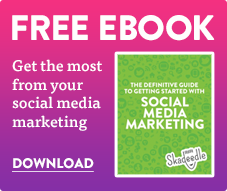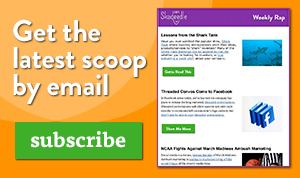Headlines are written with a purpose. To grab reader’s attention and draw them in for more. If you’re reading this, then the headline  of this post did its job. Headlines have a profound ability to draw visitors in to read more, or the do the opposite… drive them away.
of this post did its job. Headlines have a profound ability to draw visitors in to read more, or the do the opposite… drive them away.
Think about this; on average, 8 out of 10 people will read headline copy, but only 2 out of 10 will read the rest of the text on a page. This is why headlines are so vital to the success of your website, blog posts and email and social media marketing.
Our friends at Boostsuite wrote this helpful post to demonstrate how to write, format, test and measure headlines to get more new customers for your business:
How to Write Effective Headlines
First of all, you need to spend some time thinking about your headline. Don’t just blurt out the first thing that comes to mind. That’s never a good idea. Consider the 50/50 Rule of Headlines: you should spend half of the time it takes to write a piece of persuasive content on the headline.
Jot down a couple variations. Think about what you’re trying to tell your readers. What do they want to hear about? What’s trending in your industry right now? How can you draw them in to read the rest of your content and get them to perform the desired action? The key is providing the reader with a reward for reading your body copy. Don’t just sell, sell, sell. You’re writing for people, not machines.
The copywriting experts at American Writers & Artists share the Four U’s approach to writing headlines:
Headlines, subheads and bullets should:
1. Be USEFUL to the reader,
2. Provide a sense of URGENCY,
3. Convey the idea that the main benefit is UNIQUE; and
4. Do all of the above in an ULTRA-SPECIFIC way.
How to Format Your Headlines
Your headline should include keywords relevant to the content in the body. Let’s look at a few examples of headlines. Let's say you're a craft beer store owner and you're writing an article about a new, exclusive beer you have on tap, Rare Beer #5. Your goal is to get people to register for a tasting event by filling out a simple registration form.
Your headlines might look something like this:
1. Direct Headline – “Rare Beer #5 Tasting Event – Register Now”
2. Indirect Headline – “You’ve Been Waiting All Year For This”
3. News Headline – “Introducing Rare Beer #5 Tasting Event”
4. Question Headline – “Are You Ready To Experience The Wonders of Rare Beer #5?”
5. Command Headline – “Register Today to Try Rare Beer #5″
6. Reason Why Headline – “10 Reasons Why You Need To Taste Rare Beer #5″
7. Testimonial Headline (if you can get one) – “‘You Need To Taste Rare Beer #5′ says Alton Brown”
As you can see in the examples above, we've included action verbs, keywords, and questions to follow the 4 U’s. These headline variations will pique the interest of readers and urge them to read more.
Test Your Headlines
Now that you have multiple headline variations, you have a decision to make. Do you simply choose one headline, blindly post it, and call it a day? No! You need to test each of these headlines and see which one(s) are most effective at driving your end goal.
Measure Headline Effectiveness
The purpose of writing, formatting, and testing headlines is to achieve a specific end goal. Think to yourself when you go to write your next article or email newsletter, “What is the end goal of this piece of content?” Do I want people to read, comment, and share it via social media? Do I want them to register for an event like in our example? Do I want them to sign up for my newsletter? Do I want them to fill out a lead form? Do I want them to purchase something from my online store?
Think about crafting your headlines to grab attention and accomplish goals. You may be surprised at how your headlines change when you begin creating them with this sense of purpose.
How will you use these tips to create more compelling headlines for your business? Share in the comments.
Source: Boostsuite
© 2013, Skadeedle. All rights reserved. Unauthorized use and/or duplication of this material without express and written permission from this blog’s author and/or owner is strictly prohibited.





